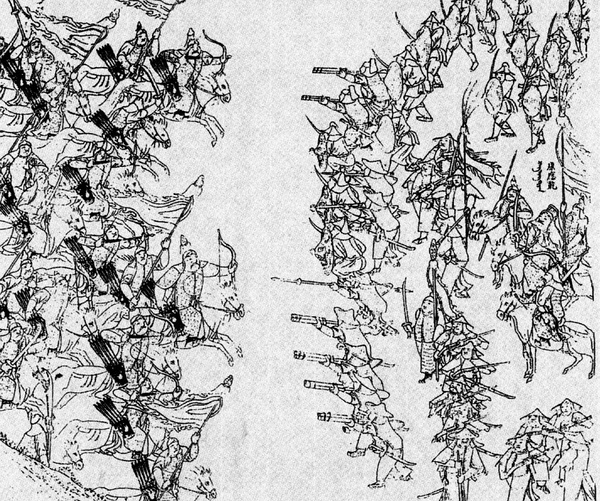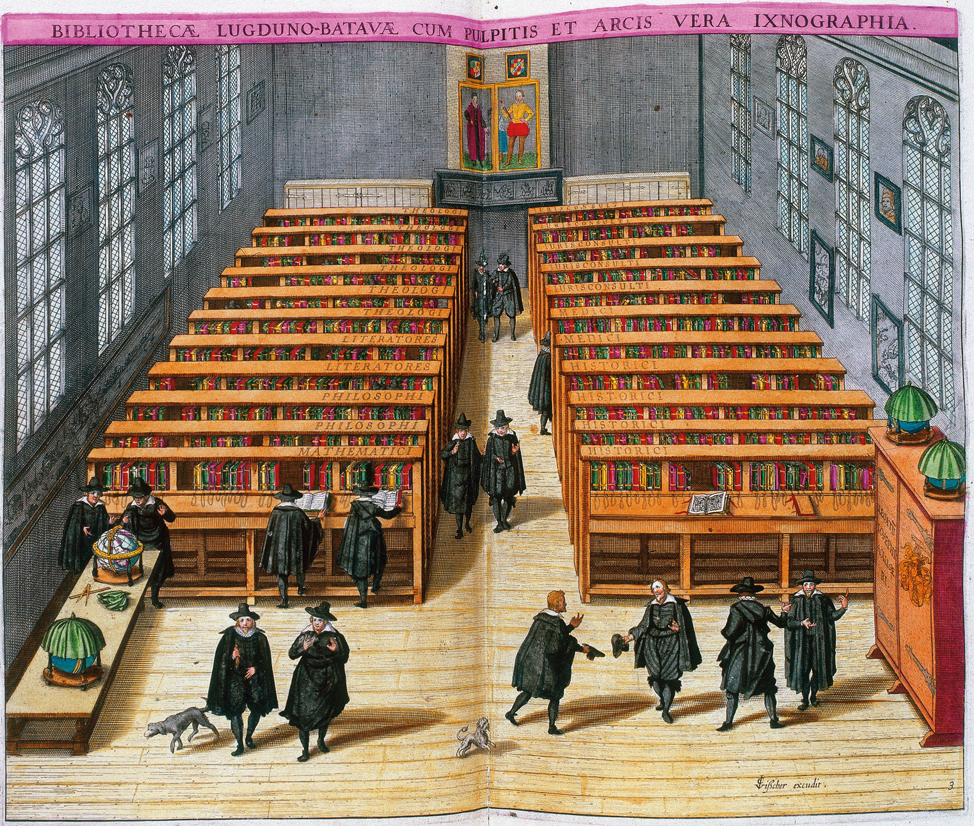|
Nikan Wailan
Nikan Wailan (; , ? - 1587) was a Jurchen leader affiliated with the Ming dynasty and a rival of Nurhaci. Name In the Jurchen language Jurchen language ( zh, t=女真語, p=Nǚzhēn yǔ) was the Tungusic language of the Jurchen people of eastern Manchuria, the rulers of the Jin dynasty in northern China of the 12th and 13th centuries. It is ancestral to the Manchu language. In ..., Nikan Wailan means "secretary of Han Chinese", thus his existence is suspected by some historians. Life In 1582, Nurhaci's father Taksi and grandfather Giocangga were killed in an attack on Gure (in present-day Xinbin Manchu Autonomous County) by Nikan, while being led by Li Chengliang. The following year, Nurhaci began to unify the Jurchen bands around his area. In 1584, when Nurhaci was 25, he attacked Nikan Wailan at Turun (also in Xinbin) to avenge the deaths of his father and grandfather, who are said to have left him nothing but thirteen suits of armour. Nikan Wailan fled away to Erhu ... [...More Info...] [...Related Items...] OR: [Wikipedia] [Google] [Baidu] |
Jurchen People
Jurchen (Manchu: ''Jušen'', ; zh, 女真, ''Nǚzhēn'', ) is a term used to collectively describe a number of East Asian Tungusic-speaking peoples, descended from the Donghu people. They lived in the northeast of China, later known as Manchuria, before the 18th century. The Jurchens were renamed Manchus in 1635 by Hong Taiji. Different Jurchen groups lived as hunter-gatherers, pastoralist semi-nomads, or sedentary agriculturists. Generally lacking a central authority, and having little communication with each other, many Jurchen groups fell under the influence of neighbouring dynasties, their chiefs paying tribute and holding nominal posts as effectively hereditary commanders of border guards. Chinese officials of the Ming dynasty (1368-1644) classified them into three groups, reflecting relative proximity to China: # Jianzhou (Chinese: 建州) Jurchens, some of whom were mixed with Korean and Chinese populations, lived in the proximity of the Mudan river, the Changbai mo ... [...More Info...] [...Related Items...] OR: [Wikipedia] [Google] [Baidu] |
Ming Dynasty
The Ming dynasty (), officially the Great Ming, was an Dynasties in Chinese history, imperial dynasty of China, ruling from 1368 to 1644 following the collapse of the Mongol Empire, Mongol-led Yuan dynasty. The Ming dynasty was the last orthodox dynasty of China ruled by the Han Chinese, Han people, the majority ethnic group in China. Although the primary capital of Beijing fell in 1644 to a rebellion led by Li Zicheng (who established the short-lived Shun dynasty), numerous rump state, rump regimes ruled by remnants of the House of Zhu, Ming imperial family—collectively called the Southern Ming—survived until 1662. The Ming dynasty's founder, the Hongwu Emperor (r. 1368–1398), attempted to create a society of self-sufficient rural communities ordered in a rigid, immobile system that would guarantee and support a permanent class of soldiers for his dynasty: the empire's standing army exceeded one million troops and the naval history of China, navy's dockyards in Nanjin ... [...More Info...] [...Related Items...] OR: [Wikipedia] [Google] [Baidu] |
Nurhaci
Nurhaci (14 May 1559 – 30 September 1626), also known by his temple name as the Emperor Taizu of Qing (), was a Jurchen chieftain who rose to prominence in the late 16th century in Manchuria. A member of the House of Aisin-Gioro, he reigned as the founding khan of the Later Jin dynasty of China from 1616 to 1626. Nurhaci reorganized and united various Jurchen tribes (the later "Manchu"), consolidated the Eight Banners military system, and eventually launched attacks on both the Ming and Joseon dynasties. His conquest of Ming dynasty's northeastern Liaodong region laid the groundwork for the Qing conquest of the Ming by his descendants, who founded the Qing dynasty in 1636. He is also generally credited with ordering the creation of a new written script for the Manchu language based on the Mongolian vertical script. Name and titles Nurhaci is written as in Manchu language. Some suggest that the meaning of the name in the Manchu language is "the skin of a wild boar", other ... [...More Info...] [...Related Items...] OR: [Wikipedia] [Google] [Baidu] |
Jurchen Language
Jurchen language ( zh, t=女真語, p=Nǚzhēn yǔ) was the Tungusic language of the Jurchen people of eastern Manchuria, the rulers of the Jin dynasty in northern China of the 12th and 13th centuries. It is ancestral to the Manchu language. In 1635 Hong Taiji renamed the Jurchen ethnicity and language to "Manchu". Writing A writing system for Jurchen language was developed in 1119 by Wanyan Xiyin. A number of books were translated into Jurchen, but none have survived, even in fragments. Surviving samples of Jurchen writing are quite scarce. One of the most important extant texts in Jurchen is the inscription on the back of "the Jin Victory Memorial Stele" ( zh, t=大金得勝陀頌碑, p=Dà jīn déshèngtuó sòngbēi, labels=no), which was erected in 1185, during the reign of Emperor Shizong. It is apparently an abbreviated translation of the Chinese text on the front of the stele.Hoyt Cleveland Tillman, Stephen H. West, ''China Under Jurchen Rule: Essays on Chin Intell ... [...More Info...] [...Related Items...] OR: [Wikipedia] [Google] [Baidu] |
Han Chinese
The Han Chinese () or Han people (), are an East Asian ethnic group native to China. They constitute the world's largest ethnic group, making up about 18% of the global population and consisting of various subgroups speaking distinctive varieties of the Chinese language. The estimated 1.4 billion Han Chinese people, worldwide, are primarily concentrated in the People's Republic of China (including Mainland China, Hong Kong and Macau) where they make up about 92% of the total population. In the Republic of China (Taiwan), they make up about 97% of the population. People of Han Chinese descent also make up around 75% of the total population of Singapore. Originating from Northern China, the Han Chinese trace their cultural ancestry to the Huaxia, the confederation of agricultural tribes living along the Yellow River. This collective Neolithic confederation included agricultural tribes Hua and Xia, hence the name. They settled along the Central Plains around the middle and lo ... [...More Info...] [...Related Items...] OR: [Wikipedia] [Google] [Baidu] |
Taksi
Taksi (Manchu: ; ; 1543–1583) or posthumously titled as Emperor Xuan was a Jurchen chieftain and father of Nurhaci, founder of the Later Jin dynasty, and the fourth son of Giocangga. A member of the House of Aisin-Gioro, he was killed in an attack on Gure (古哷 ''Gǔlè'') by a rival Jurchen chieftain Nikan Wailan in 1583. Taksi had nine recorded children. Nurhaci was the first born son and also the most highly achieved. It seems like several of Nurhaci's brothers had names that closely resembled his phonetically. The Seven Grievances issued by Nurhaci claimed that the Ming dynasty killed Taksi for no reason. This caused Nurhaci to declare war on the Ming, which eventually led to the destruction of the Ming and rise of the Qing dynasty. During the reign of the Shunzhi Emperor, the court of the Qing dynasty retroactively gave Taksi the temple name Xianzu (顯祖) and the posthumous name Emperor Xuan (宣皇帝). Family Wife * Empress Xuan, of the Hitara clan (宣皇 ... [...More Info...] [...Related Items...] OR: [Wikipedia] [Google] [Baidu] |
Giocangga
Giocangga (Manchu: ; ; 1526–1583) was the son of Fuman and the paternal grandfather of Nurhaci, the man who unified the Jurchen peoples and founded the Later Jin dynasty of China. Both he and his son Taksi attacked Atai's fort, which was being besieged by a rival Jurchen chieftain Nikan Wailan (; 尼堪外蘭 ''Níkān Wàilán''), who promised the governance of the city to whoever would kill Atai. One of Atai's underlings rebelled and murdered him. Both Giocangga and Taksi were killed by Nikan Wailan under unclear circumstances. Giocangga, Taksi and Nikan were all under command of Li Chengliang. Giocangga was accorded the temple name Jǐngzǔ (景祖) and the posthumous name Emperor Yi (翼皇帝) by the Qing dynasty. In 2005, a study led by a researcher at the British Wellcome Trust Sanger Institute suggested that Giocangga might be a direct male-line ancestor of over 1.5 million men, mostly in northeastern China. [...More Info...] [...Related Items...] OR: [Wikipedia] [Google] [Baidu] |
Xinbin Manchu Autonomous County
Xinbin Manchu Autonomous County (, Manchu: ; Mölendroff: sinbin manju beye dasangga siyan), or simply Xinbin County (Postal romanization, postal: Sinpin; ), is one of the three counties under the administration of the prefecture-level city of Fushun, in the east of Liaoning, Liaoning Province, China, bordering Jilin, Jilin Province to the east. With a population of about 310,000, it covers an area of . The county is home to Hetu Ala, the first capital of the Later Jin (1616–1636), Later Jin and the Yongling (Qing dynasty), Yong Mausoleum (:zh:清永陵, 清永陵) of the Later Jin and the Qing dynasty. Administrative divisions There are nine Town (China), towns, one ethnic town and 10 Townships of the People's Republic of China, townships in the county. Climate References External links Xinbin Manchu Autonomous County County-level divisions of Liaoning Manchu autonomous counties {{Liaoning-geo-stub ... [...More Info...] [...Related Items...] OR: [Wikipedia] [Google] [Baidu] |
Li Chengliang
Li Chengliang (; 1526–1618) was a Ming dynasty general. Early life Born in a military family in Tieling (in modern-day Liaoning province, Liaodong in the Ming empire's northeast), Li suffered from poverty during his childhood. It was not until he reached the age of 40 that he received an official appointment, but he eventually became Liaodong Regional Commander () with the backing of the Chief Grand Secretary Zhang Juzheng. Li served two terms as Liaodong Regional Commander, for 22 years and 8 years respectively. Military career against the Mongols In the 1570s, the Chahar Mongols migrated east and often harassed the Liaodong region. Li's first tenure as Liaodong Regional General saw five victories against the Chahar. For these victories, in 1579 he was named "Earl of Ningyuan" (Ningyuan bo 寧遠伯), a title that was made hereditary in 1580. # 1575 (third year of the Wanli reign): Tümen Khan led over a hundred thousand cavalry troops to attack and pillage the Yizhou and ... [...More Info...] [...Related Items...] OR: [Wikipedia] [Google] [Baidu] |
1587 Deaths
Events January–June * February 1 – Queen Elizabeth I of England signs the death warrant of her cousin Mary, Queen of Scots, after Mary has been implicated in a plot to murder Elizabeth. Seven days later, on the orders of Elizabeth's privy council, Mary is beheaded at Fotheringhay Castle. * February 12– 24 – Period of exceptionally severe cold in western Europe. * April 29 – ''Singeing the King of Spain's Beard'': On an expedition against Spain, English privateer Sir Francis Drake leads a raid in the Bay of Cádiz, sinking at least 23 ships of the Spanish fleet. * May 19 – John Davis sets out from Dartmouth, Devon, for a third attempt to find the Northwest Passage. July–December * July 22 – Roanoke Colony: A group of English settlers arrive on Roanoke Island off North Carolina, to re-establish the deserted colony. * August 18 – According to legend, Saul Wahl is named king of Poland; he is deposed the following day. * ... [...More Info...] [...Related Items...] OR: [Wikipedia] [Google] [Baidu] |
Date Of Birth Unknown
Date or dates may refer to: *Date (fruit), the fruit of the date palm (''Phoenix dactylifera'') Social activity *Dating, a form of courtship involving social activity, with the aim of assessing a potential partner **Group dating *Play date, an appointment for children to get together for a few hours * Meeting, when two or more people come together Chronology * Calendar date, a day on a calendar ** Old Style and New Style dates, from before and after the change from the Julian calendar to the Gregorian calendar ** ISO 8601, an international standard covering date formats *Date (metadata), a representation term to specify a calendar date **DATE command, a system time command for displaying the current date *Chronological dating, attributing to an object or event a date in the past **Radiometric dating, dating materials such as rocks in which trace radioactive impurities were incorporated when they were formed Arts, entertainment and media Music *Date (band), a Swedish dans ... [...More Info...] [...Related Items...] OR: [Wikipedia] [Google] [Baidu] |
Jurchens In Ming Dynasty
Jurchen (Manchu: ''Jušen'', ; zh, 女真, ''Nǚzhēn'', ) is a term used to collectively describe a number of East Asian Tungusic-speaking peoples, descended from the Donghu people. They lived in the northeast of China, later known as Manchuria, before the 18th century. The Jurchens were renamed Manchus in 1635 by Hong Taiji. Different Jurchen groups lived as hunter-gatherers, pastoralist semi-nomads, or sedentary agriculturists. Generally lacking a central authority, and having little communication with each other, many Jurchen groups fell under the influence of neighbouring dynasties, their chiefs paying tribute and holding nominal posts as effectively hereditary commanders of border guards. Chinese officials of the Ming dynasty (1368-1644) classified them into three groups, reflecting relative proximity to China: # Jianzhou (Chinese: 建州) Jurchens, some of whom were mixed with Korean and Chinese populations, lived in the proximity of the Mudan river, the Changbai mount ... [...More Info...] [...Related Items...] OR: [Wikipedia] [Google] [Baidu] |





